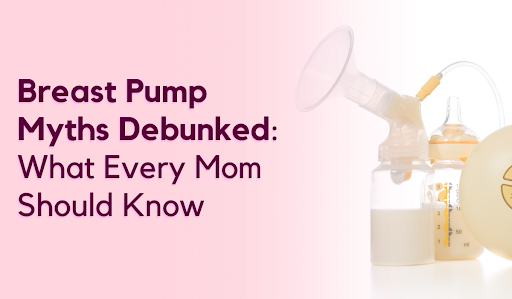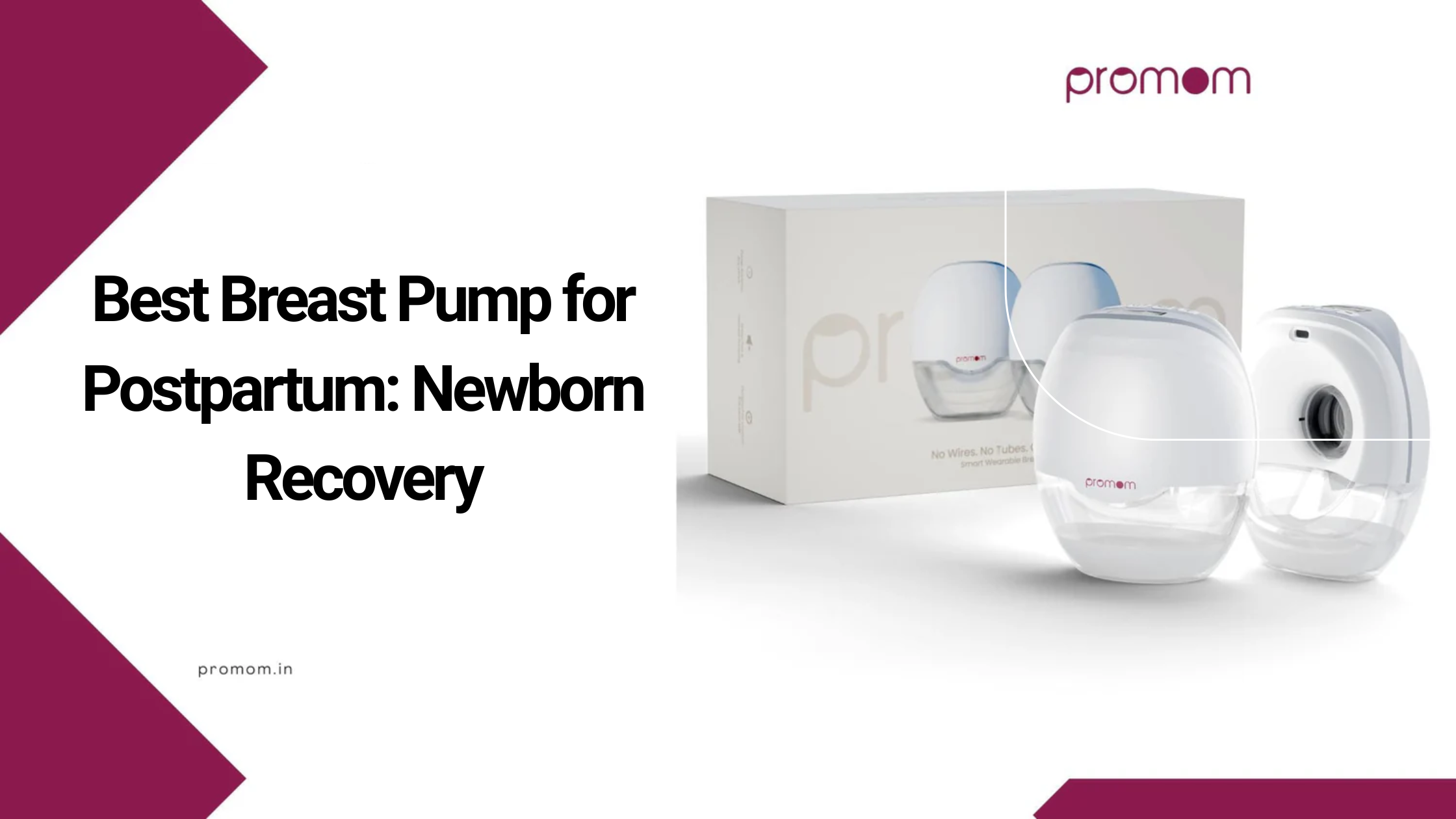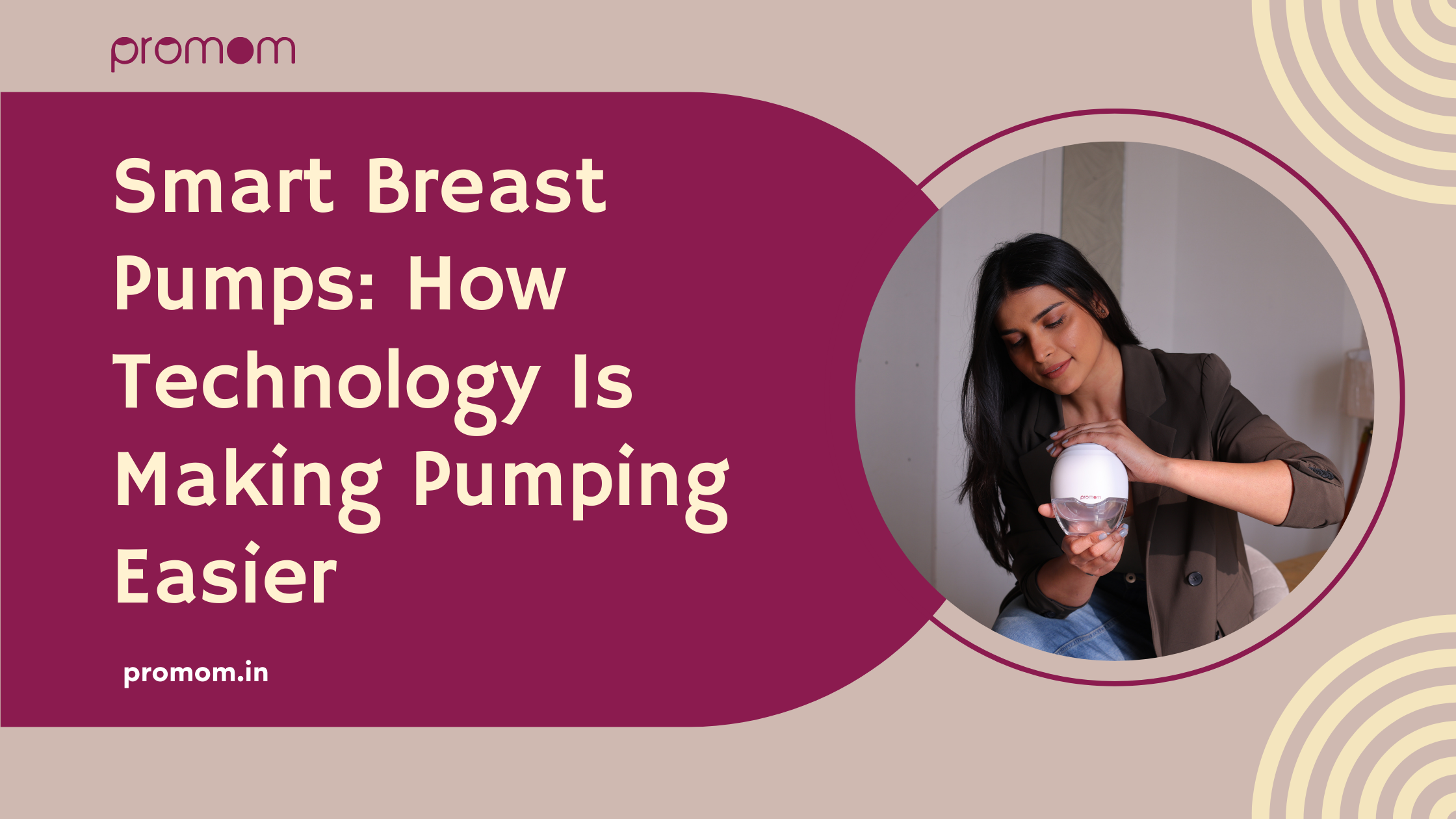
Breast Pump Myths Debunked: What Every Mom Should Know
Breastfeeding stands as a superb natural process for moms yet numerous mothers must use breast pumps for practical reasons. Breast pumps function as vital tools for storing milk, maintaining breast milk supply, or enabling others to assist with feeding. Many misconceptions related to breast pumps create uncertainty and doubt among new moms.
The following section will debunk popular myths about breast pumps to help you make clear decisions regarding your baby's health.
Myth #1: Breast Pumps Hurt
The use of breast pumps does not need to be painful since you learn correct usage methods. The usual source of discomfort stems from improper flange sizing as well as suboptimal suction levels or an improper session position.
The current design of breast pumps focuses on comfort by allowing users to set adjustable suction that replicates breast milk removal similar to natural breastfeeding. Seek help from a lactation expert if you feel pain or adjust your settings. Choosing suitable equipment allows for a comfortable pumping process.
Myth #2: Pumping Decreases Milk Supply
Many nursing mothers believe that breast pump use decreases their milk production. Since breast milk production functions through supply-demand dynamics, it persists unaffected by pump usage. Pumping your breasts frequently along with effective milk removal leads to continued milk production by your body.
Breast milk output may decrease if the vacuum pressure of pumping breasts remains irregular or the utilised breast pump operates inefficiently. A proper and steady milk supply requires regular pumping times and sufficient fluid intake.
Power pumping several times during the day provides an additional way to increase milk output when needed. The correct usage of pump equipment allows milk flow to remain continuous.
Myth #3: Breast Pumps Are Only for Working Moms
The device that working mothers need for breastfeeding serves as more than just an appliance for them. Children raised by home-based caretakers find useful advantages to pumping milk for freezing storage or joint feeding responsibilities and breast milk regulation.
Different mothers pump milk for either exclusive storage or to prevent supply reduction when breastfeeding challenges occur. A breast pump provides breastfeeding mums with adaptability to sustain their nursing routine according to their personal lifestyle choices.
Myth #4: Pumped Milk Isn’t as Nutritious as Direct Breastfeeding
Breast milk extracts from pumps are considered by certain individuals to have less nutritional worth than breastfeeding directly. No matter how a mother chooses to feed their baby breast milk, it retains its nutritional value together with its antibodies and immune-protective elements.
Proper storage and handling of pumped milk help retain its quality. The recommended storage methods for breast milk when following proper guidelines will maintain all essential nutrition for your baby. The use of a breast pump lets mothers offer premium nutritional benefits in a convenient manner.
Myth #5: All Breast Pumps Work the Same
Pumps that serve as breast milk extractors never exist identically. Breast pumps exist in manual as well as electric and hospital-grade varieties, which serve various needs. A proper selection of a breast pump provides essential comfort features during use as well as efficient performance.
Users who need frequent pumping should use double electric breast pumps, but manual pumps serve occasional needs best. Hospital-grade pumps serve as the perfect tool to assist mothers whose milk supply is inadequate. The purchase of a premium breast pump leads to improved comfort and efficiency when using the device to extract milk.
Myth #6: You Must Pump at the Same Time Every Day
The utilisation of a breast pump does not require following a strict daily routine. Regular breast emptying maintains your milk supply through a scheduled routine. Women either implement strict pumping schedules or they make their decisions according to their babies' feeding indications.
Your pumping schedule works best when you adapt to your fullness or nursing needs. A breast pump should serve your daily needs instead of controlling your daily routines. The most important factor is discovering pumping patterns that suit your needs.
Myth #7: You Can’t Breastfeed and Pump at the Same Time
The misconception that nursing mothers cannot simultaneously breastfeed and pump is incorrect because it actually helps create more milk supply. Nursing combined with pumping activates stronger milk release, which leads to rapid milk expression.
The combination of nursing with pumping results in faster productivity while possibly producing more milk. The correct approach enables breastfeeding mothers to use pumping devices effectively alongside breast milk feeding.
Final Thoughts
The path towards breastfeeding and pumping involves challenges, which knowledge about these practices can simplify. Each mother faces unique breastfeeding experiences. It also making what succeeds for some unsuccessful for others. Find the right breast pump for your situation, and know where to ask for help when needed while staying well-informed.
Promom stands as your trustworthy motherhood partner for high-quality breast pumps and accessories during your breastfeeding and pumping experience.


